Mountain Hawk-Eagles
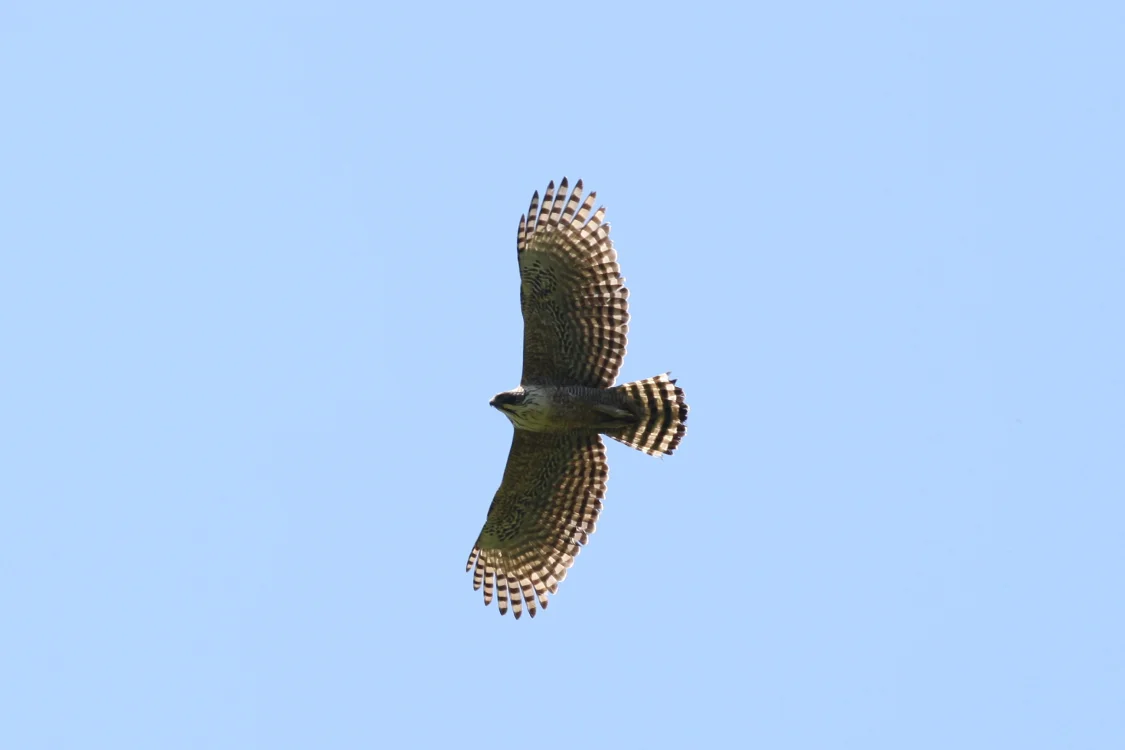
This page contains photos of animals.
Bird names are listed in accordance with the Check-list of Japanese Birds, 8th Revised Edition.The “Mountain Hawk-Eagle” is an impressively large raptor, with a wingspan roughly as wide as an adult human's outstretched arms. Positioned at the top of the forest ecological pyramid, the Mountain Hawk-Eagle plays an important role in maintaining ecological balance.
The Majestic Forest King with Striking Plumage
The Mountain Hawk-Eagle is a bird admired for the striking black-and-white striped pattern across its wings and tail feathers. It has a varied diet, including small rodents, raccoon dogs, Copper Pheasants, and snakes. While soaring through the sky, the Mountain Hawk-Eagle can spot its prey and execute a swift dive to capture it. Alternatively, it may perch on a high branch, patiently waiting for prey to come into sight. Created for accessing and maintaining our Natural Water Sanctuaries, the forest logging roads are about 2.5 meters wide and have become ideal hunting grounds for the Mountain Hawk-Eagle.
Known as the “king of the forest,” this raptor sits at the top of forest ecosystems in Japan. With the growing maturity of Japanese forests in recent years, the Mountain Hawk-Eagle population in this country has also increased.
Although the Golden Eagle is slightly larger than the Mountain Hawk-Eagle, the Japanese name for this eagle indicates that it is a small eagle species. Unlike the Mountain Hawk-Eagle, the Golden Eagle hunts in grasslands. As grassland habitats continue to decline in Japan, the species faces an increased risk of extinction here.
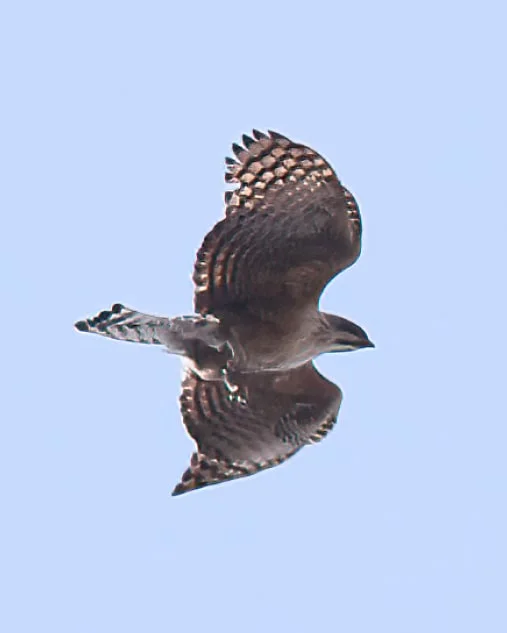
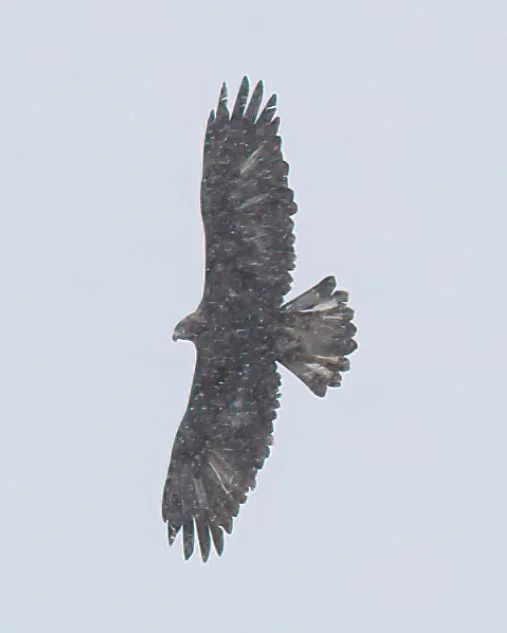
Forest Population Control: The Role of Apex Predators
Birds like the Mountain Hawk-Eagle, Golden Eagle, and Oriental Stork sit at the top of the ecological pyramid. By preying on animals lower in the pyramid, they help prevent overpopulation.
In the past, wolves held this apex role in Japan’s forest ecosystems. However, after wolves were driven to extinction, deer lost their main predator and have now multiplied excessively in Japanese forests. As a result, deer are overgrazing grasses, shrubs, and tree bark, causing severe ecological damage.
Sadly, no wolves with the same genetic lineage as the extinct Japanese wolf remain today. It is extremely difficult to bring back a species once it has been completely eliminated from its natural habitat. To ensure that the Mountain Hawk-Eagle and Golden Eagle do not meet the same fate as the Japanese wolf, we are actively promoting the Eagle/Hawk-Nurturing Support Program in our Natural Water Sanctuaries.
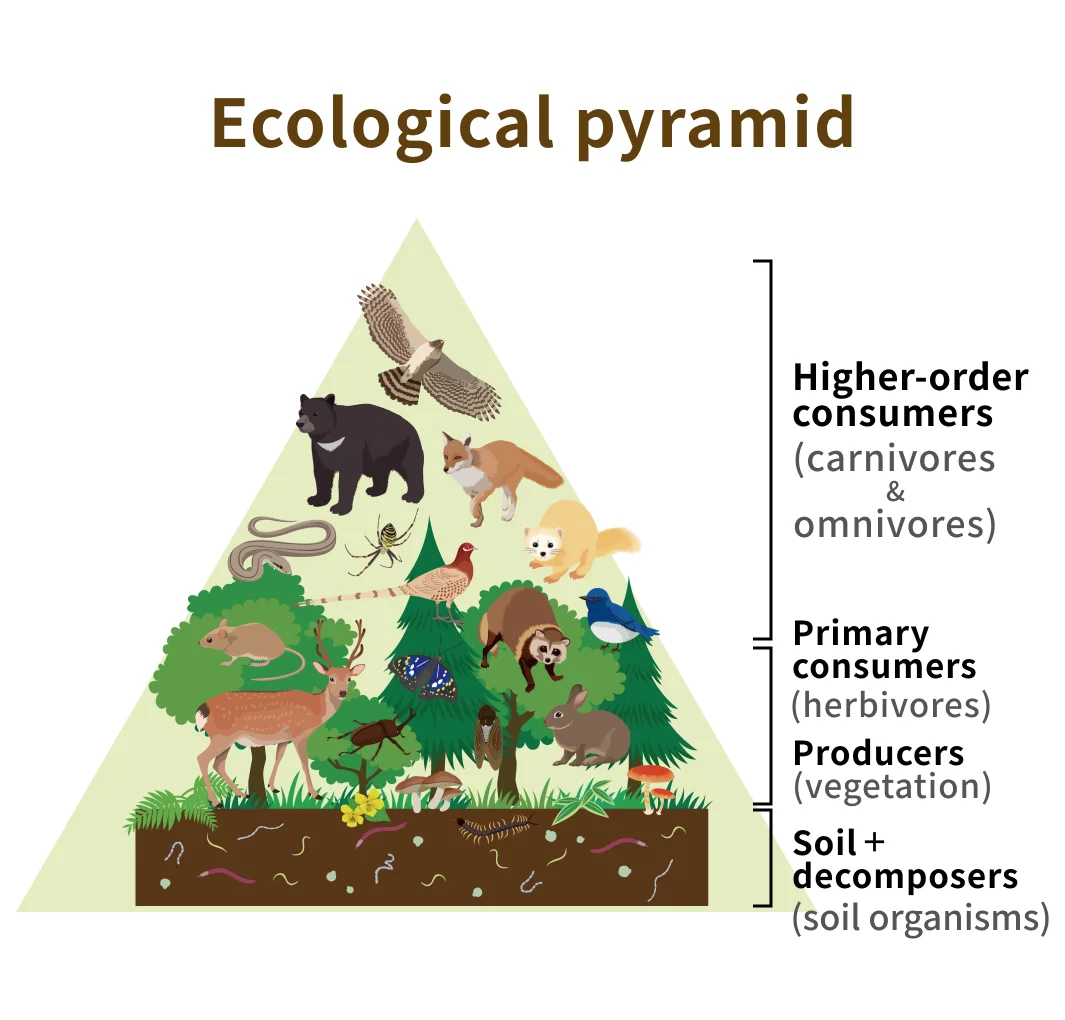
Natural Water Sanctuary Initiatives
In each Natural Water Sanctuary, efforts are underway to create healthy forest environments where birds of prey such as eagles and hawks, which sit at the top of the ecological pyramid, can successfully raise their young. These efforts include forest maintenance and the installation of manmade nesting platforms.
Restoring Hunting Grounds for the Mountain Hawk-Eagle
In our Natural Water Sanctuary Akagi, there was once a riverside area where the Mountain Hawk-Eagle used to hunt. Over time, this area became overgrown with vegetation, making it unsuitable for hunting.
To address this, we cleared the overgrown plants, conducted patch clear-cutting in the adjacent cedar forest, and planted broadleaf trees in the cleared areas. Thanks to these efforts, Mountain Hawk-Eagles can once again be seen visiting the site to hunt.
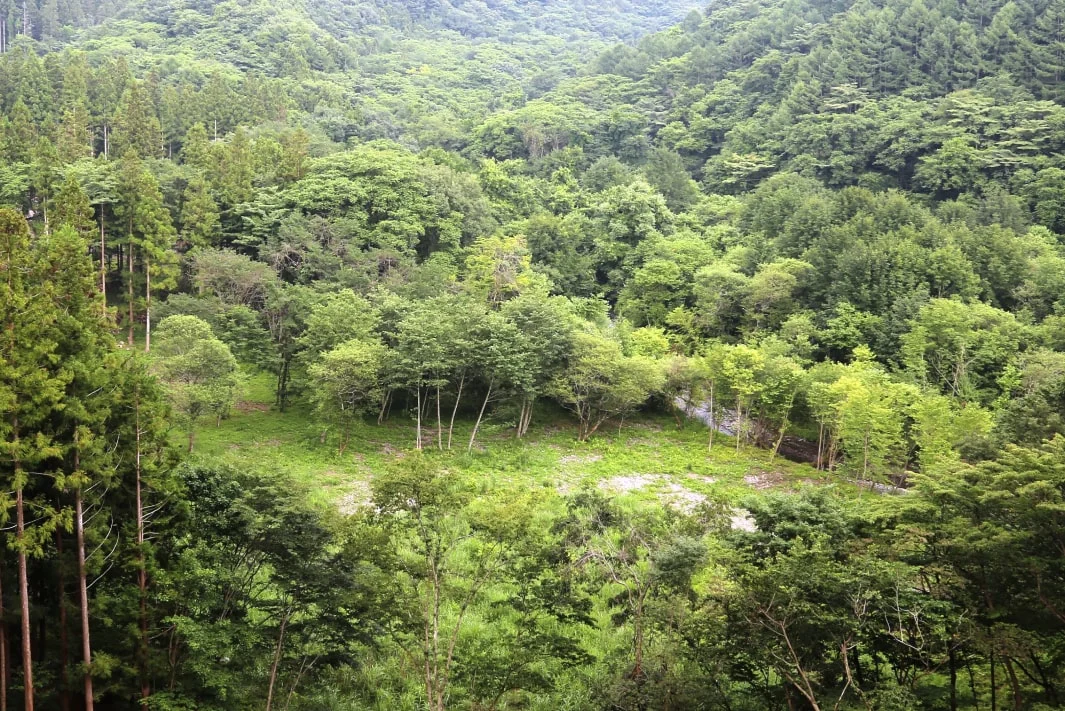
Experts involved in this Initiative
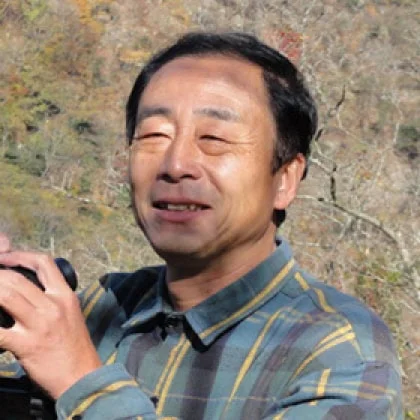
Toru Yamazaki
President, Asian Raptor Research and Conservation Network
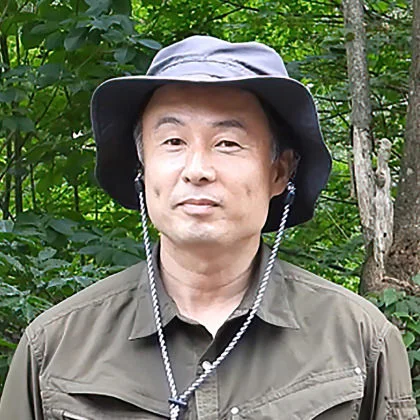
Takashi Fujii
Research Manager, Japanese Society for Preservation of Birds Research Department
Becoming a Hawk-friendly Water Plant
The Alps Azumino National Government Park is part of our Natural Water Sanctuary Kita Alps and is also adjacent to the Suntory Kita Alps Shinano-no-Mori Water Plant. Historical records from the park reveal that its red pine forest was once home to many hawk nesting sites.
So, in the winter of 2019, we selected suitable red pines for hawk nesting, cleared the surrounding broadleaf trees, and installed manmade nesting platforms in the chosen trees to enhance the nesting opportunities.
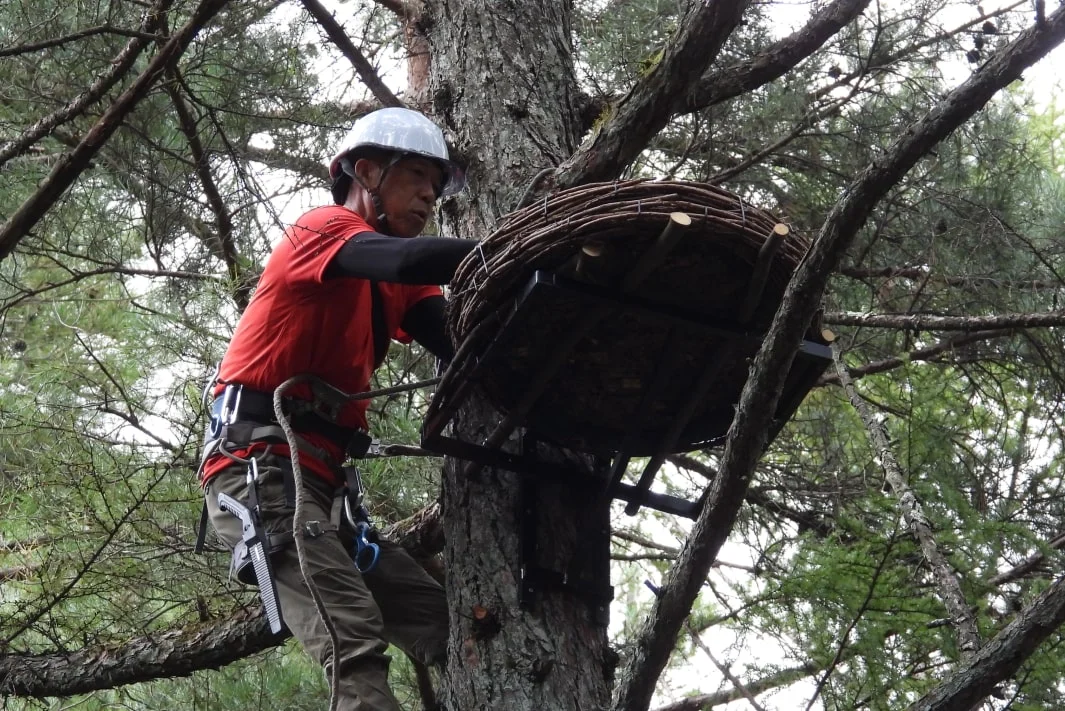
This initiative bore fruit in early summer 2022 when a Eurasian Goshawk began nesting there, and three chicks successfully fledged.
Experts involved in this Initiative
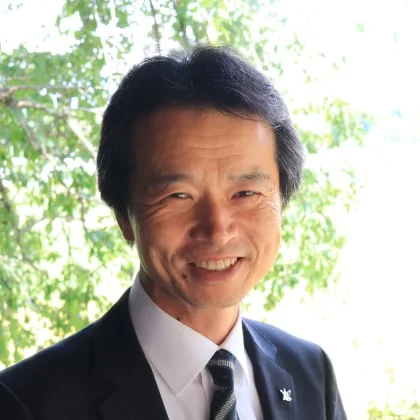
Koichi Endo
Chairperson, Wild Bird Society of Japan

Takashi Fujii
Research Manager, Japanese Society for Preservation of Birds Research Department

AI-Shokubutsu Landscape Planning Office
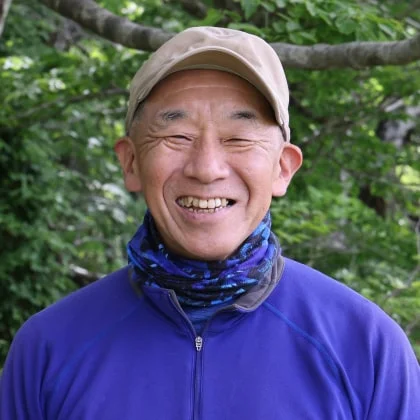
Yoshiyuki Hioki
Specially Appointed Professor, Tottori University

MORISHO LLC
Natural Water Sanctuaries are Home to Many Other Living Things
Learn about some of the birds, mammals, insects, and living things that enrich the soil thriving in our Sanctuaries.
Learn about the living things in the Natural Water Sanctuaries
 Home
Home Initiative Policy and Structure
Initiative Policy and Structure Living Things in the Natural Water Sanctuaries
Living Things in the Natural Water Sanctuaries Dedication to Water
Dedication to Water Natural Water Sanctuaries
Natural Water Sanctuaries  Natural Water
Natural Water  Initiative History
Initiative History